The Internet of Things (IoT) has ushered in a new era in healthcare, fundamentally transforming how patient care is delivered. By interconnecting smart devices and technologies, IoT in healthcare has opened a world of possibilities. It enables the collection and exchange of data to enhance patient care and streamline healthcare processes. In this comprehensive exploration, we will dive deep into the realm of IoT in healthcare, shedding light on its various applications, the advantages it offers, the challenges it presents, and the promising future it holds for patient care.


Comprehending the Role of the Internet of Things (IoT) in Healthcare
The broader concept of IoT involves linking everyday objects and devices to the internet or each other, allowing them to collect and exchange data. In the healthcare sector, IoT represents the integration of interconnected devices, sensors, and systems for the real-time collection, transmission, and analysis of patient health data. This data is then harnessed to enhance clinical decision-making, increase patient engagement, and streamline healthcare operations.
The central idea behind IoT in healthcare is to adopt a more patient-centric and data-driven approach to medical care. By continuously monitoring and analyzing patient data, healthcare providers can offer more personalized treatment plans, make earlier interventions, and enhance overall patient outcomes.
Applications of IoT in Healthcare
IoT technologies in healthcare have a myriad of applications, each contributing to improving patient care and revolutionizing the healthcare industry. Here are some significant areas where IoT is making a substantial impact:
- Wearable Health Devices: Wearable devices, such as smartwatches, fitness trackers, and medical-grade wearables, have become ubiquitous. These gadgets can track a wide range of health metrics, including heart rate, steps taken, sleep patterns, and more. They provide real-time feedback on health and can alert healthcare providers to potential issues. For instance, wearable devices can monitor heart rhythms and detect irregularities, particularly vital for individuals with heart conditions.
- Remote Patient Monitoring: IoT enables remote patient monitoring, allowing healthcare providers to keep track of vital signs and patient conditions from a distance. This is particularly valuable for managing chronic diseases. Devices like blood glucose monitors, blood pressure cuffs, and pulse oximeters can transmit data to healthcare providers, facilitating timely interventions when necessary.
- Medication Adherence: IoT can assist individuals in adhering to medication regimens. Smart pill dispensers can send reminders and alerts for medication intake. Additionally, they can notify healthcare providers or family members if doses are missed, enhancing patient compliance and safety.
- Telehealth and Telemedicine: The COVID-19 pandemic accelerated the adoption of telehealth services. IoT plays a pivotal role in telehealth by enabling video consultations, remote monitoring, and the exchange of medical data between patients and healthcare providers. This has made healthcare more accessible, especially for individuals in remote or underserved areas.
- Smart Hospitals and Facilities: Within healthcare facilities, IoT technologies are used to optimize operations. Smart hospital beds can adjust positions to prevent bedsores, while IoT-connected medical devices can provide real-time data to healthcare staff. IoT also plays a role in asset tracking and inventory management, ensuring that essential medical equipment and supplies are readily available.
- Patient Engagement: IoT devices encourage patients to take an active role in their healthcare. Apps and devices that track and visualize data like daily steps or calorie intake can motivate individuals to make healthier choices. This engagement can lead to improved health outcomes.
- Falls and Wandering Detection: For geriatric patients and those with cognitive impairments, IoT sensors can detect falls and monitor wandering behavior. Alerts are sent to caregivers or healthcare providers to ensure the safety of patients.
- Environmental Monitoring: IoT can be used to monitor environmental conditions in healthcare facilities. This includes air quality, temperature, and humidity, which are essential for infection control and patient comfort.
- Clinical Decision Support: IoT systems can analyze patient data and provide clinical decision support to healthcare providers. This assists in diagnosing conditions and determining the most suitable treatment plans.


Benefits of IoT in Healthcare
The integration of IoT in healthcare offers a multitude of benefits, both for patients and healthcare providers. Here are some of the key advantages:
- Real-Time Monitoring: IoT enables continuous, real-time monitoring of patient data, allowing for early detection of health issues and timely interventions. This is particularly valuable for chronic disease management and post-operative care.
- Improved Patient Outcomes: With IoT, healthcare providers can make data-driven decisions that lead to improved patient outcomes. Customized treatment plans and early interventions based on real-time data can result in better health results.
- Enhanced Patient Engagement: IoT empowers patients to be more engaged in their own healthcare. By providing them with access to their health data, they can make informed decisions about their lifestyle and treatment plans.
- Efficiency and Cost Reduction: IoT streamlines healthcare operations by automating data collection and analysis. This reduces the administrative burden on healthcare staff and can lead to cost savings in the long run.
- Access to Remote and Underserved Areas: IoT-enabled telehealth services extend the reach of healthcare to remote and underserved areas, making medical expertise more accessible.
- Improved Medication Adherence: IoT helps patients adhere to their medication regimens by providing reminders and alerts. This not only improves patient safety but also contributes to better health outcomes.
- Preventive Care: With continuous monitoring, IoT can identify potential health risks and enable preventive measures to be taken before conditions worsen.


Challenges and Considerations
While IoT in healthcare offers numerous benefits, it also presents certain challenges and considerations:
- Data Security: Patient health data is highly sensitive, and ensuring its security and privacy is paramount. Healthcare organizations must implement robust security measures and encryption to protect patient information.
- Interoperability: IoT devices often use different communication protocols and standards, making data integration and interoperability a challenge. Ensuring that devices can communicate and share data seamlessly is essential.
- Data Overload: The continuous stream of data generated by IoT devices can lead to information overload for healthcare providers. Implementing effective data management and analysis solutions is critical to avoid overwhelming clinicians.
- Ethical Concerns: IoT raises ethical issues related to informed consent and data ownership. Patients should be aware of how their data is being used, and clear policies should define data ownership and usage.
- Regulatory Compliance: Compliance with regulations, such as the Health Insurance Portability and Accountability Act (HIPAA) in the United States, is essential. Non-compliance can result in severe legal and financial consequences.
- Resource Investment: Implementing and maintaining IoT systems in healthcare can be resource-intensive, both in terms of financial investment and personnel. Healthcare organizations must commit to the necessary resources for successful implementation.
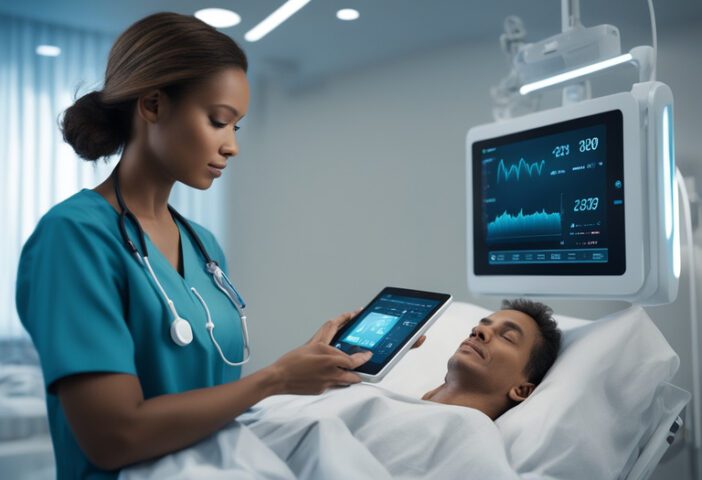
The Future of IoT in Healthcare
The future of IoT in healthcare holds significant promise and is expected to see several key developments:
- AI and Machine Learning Integration: AI and machine learning will enhance the analysis of IoT-generated data. These technologies can identify patterns and trends that may not be apparent through traditional methods, leading to more accurate diagnoses and treatment recommendations.
- Edge Computing: Edge computing will enable data processing to occur closer to the source of the data, reducing latency and enabling real-time responses. This is crucial for critical healthcare applications.
- Blockchain for Data Security: Blockchain technology may be used to enhance the security and privacy of healthcare data. Blockchain’s decentralized and tamper-resistant nature could ensure the integrity of patient records and data sharing.
- IoMT (Internet of Medical Things): IoMT is a subset of IoT that focuses specifically on medical devices and applications. This includes smart implants, medical robots, and AI-powered diagnostics. The expansion of IoMT will lead to more sophisticated healthcare solutions.
- Patient Empowerment: Patients will become more actively involved in their healthcare decisions, thanks to the data and insights provided by IoT. This trend will empower individuals to take control of their health and collaborate with healthcare providers on more personalized care plans.
IoT in healthcare is revolutionizing the way patient care is delivered. It offers real-time monitoring, improved patient outcomes, enhanced engagement, and significant efficiency gains. However, it comes with challenges related to data security, interoperability, ethical concerns, and regulatory compliance.
As technology continues to evolve, the future of IoT in healthcare is promising, with the integration of AI and blockchain technology, the growth of IoMT, and an increased focus on patient empowerment. With these advancements, IoT is poised to play a central role in the ongoing transformation of healthcare, ultimately leading to better patient care and improved overall health outcomes.


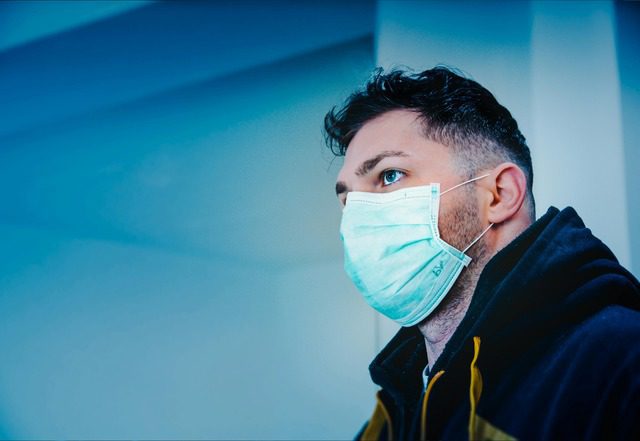
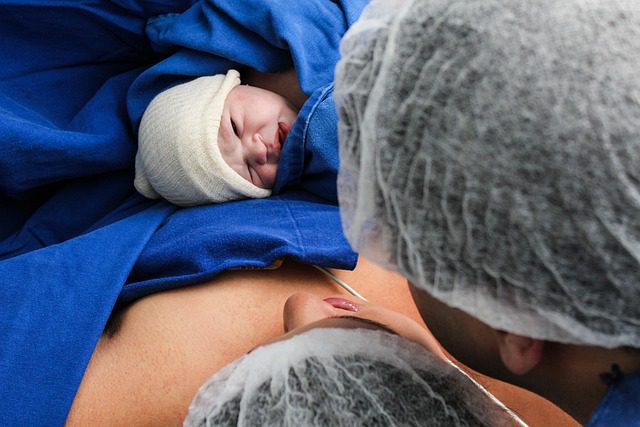













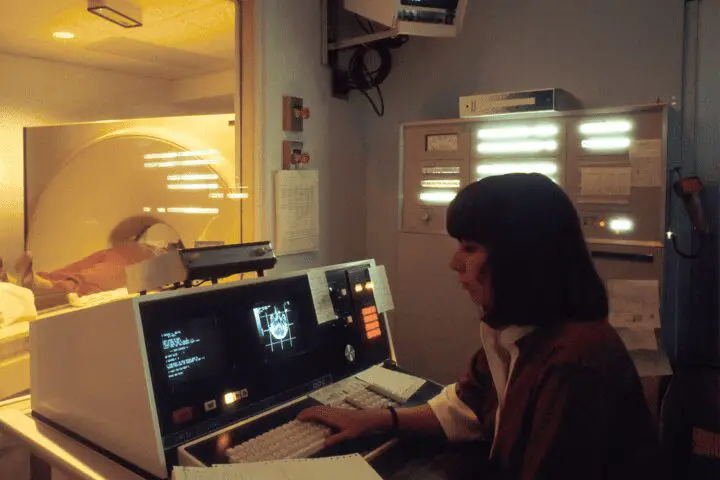










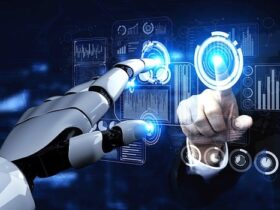


[…] The Future of Mobile Health Apps […]
[…] Future of AR and VR in Medical […]
Some truly nice and useful info on this web site, besides I conceive the style has excellent features.
Its wonderful as your other blog posts : D, appreciate it for putting up.